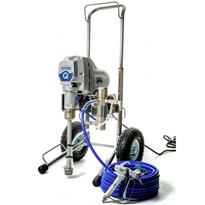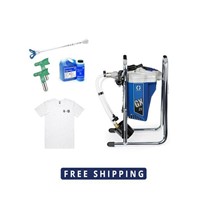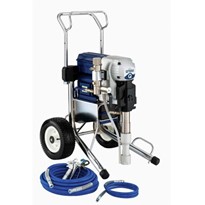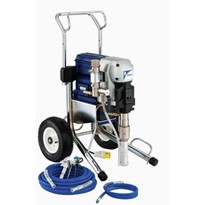Painting large surfaces can be daunting. It can also be extremely time consuming. With airless sprayers, the painting process can be overwhelmingly simplified. Let's say you want to speed up a job that would normally take you days and require several litres of paint. You may also want a glass-smooth finish on things like woodwork, concrete walls and doors. Airless spraying can provide these results.
How it works
Airless spray atomises, or breaks up fluid into small droplets without the use of compressed air. In an airless system, fluid is pumped under high pressure through a spray tip. The tip size and pressure is what determines the material flow rate. That same tip also creates the 'fan pattern'. In contrast, air spray systems inject compressed air into the fluid stream of paint to achieve atomisation.
In airless spray, the fast moving high-pressure liquid stream provides the energy necessary to overcome the fluid's viscosity (resistance to flow) and surface tension (a force that bonds the surface of a liquid together) to form a fine spray.
In the depiction of spray from a gun, high pressure forces fluid through a small nozzle (spray tip). The fluid then emerges as a solid stream, or what is commonly referred to as a sheet, at a high speed. When the solid stream hits the air, it becomes disrupted. This disruption breaks the fluid into fragments initially, then ultimately very small droplets that form the spray pattern.
Three advantages of airless sprayers

Besides saving you time and money on labour, it's argued that airless spraying can result in finishes superior to what you can achieve with a roller or a brush. Businesses are opting for this technique as opposed to more traditional methods for several reasons, the most popular being:
Speed
Research conducted by the Painting and Decorating Contractors of America (PACE), an association of painting contractors and related industry professionals, indicates that airless spraying can save painters between 50 per cent and 75 per cent of their painting time. Most coatings can also be sprayed with very little thinner added, which thereby reduces drying time.
Airless spraying is up to four times faster than brush applications and at least two times faster than using a roller, which means more jobs are able to be completed in less time, whilst using less labour. And due to its speed
Quality
Airless sprayers produce an even coat of of very 'wet' paint on all types of surfaces. This ensures good adhesion and flow-out, with the coating also being able to penetrate better into any pits or crevices.
An overall thick coating is produced, which then reduces the amount of coats that a surface would normally require. The result is a high quality finish.
Versatility
Airless sprayers are versatile pieces of equipment. They can be used for a wide range of coating materials, including interior and exterior jobs. Using a variety of tips on your airless sprayer, you are able to spray thinner liquids like stains, lacquers and varnishes, or, thicker liquids such as latex house paint.
They're also easy to transport from job site to job site.
When working out whether your job or project could use an airless sprayer, you'll need to consider things like time and the kind of surface that needs painting. While it's possible to paint large structures like bridges with a brush or a roller, it would also be hugely inefficient.
When you're faced with a need for speed, along with consistent quality, you might want to consider the use of an airless sprayer.


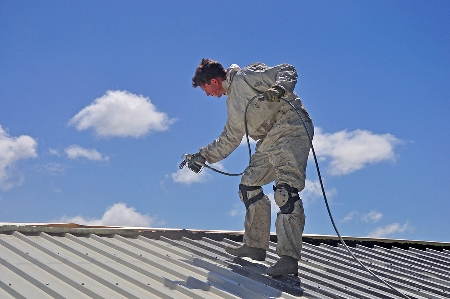
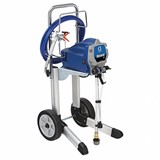
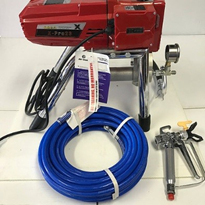
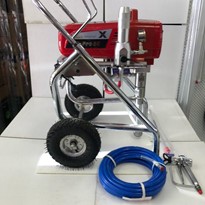
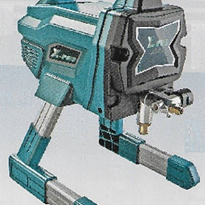
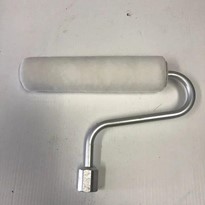
-205x205.jpg)
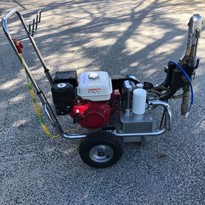
-205x205.jpg)
